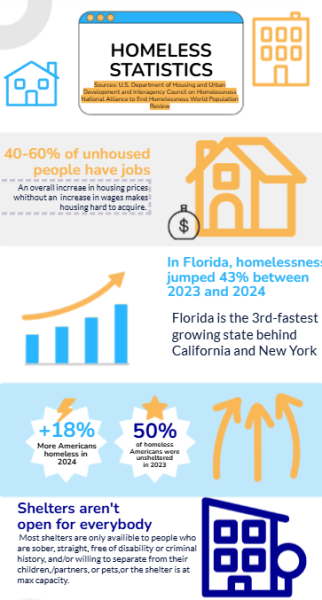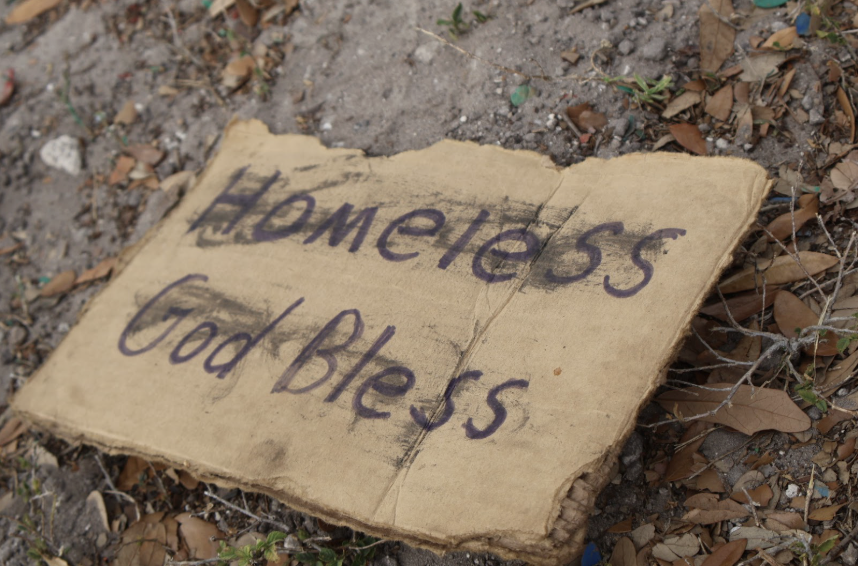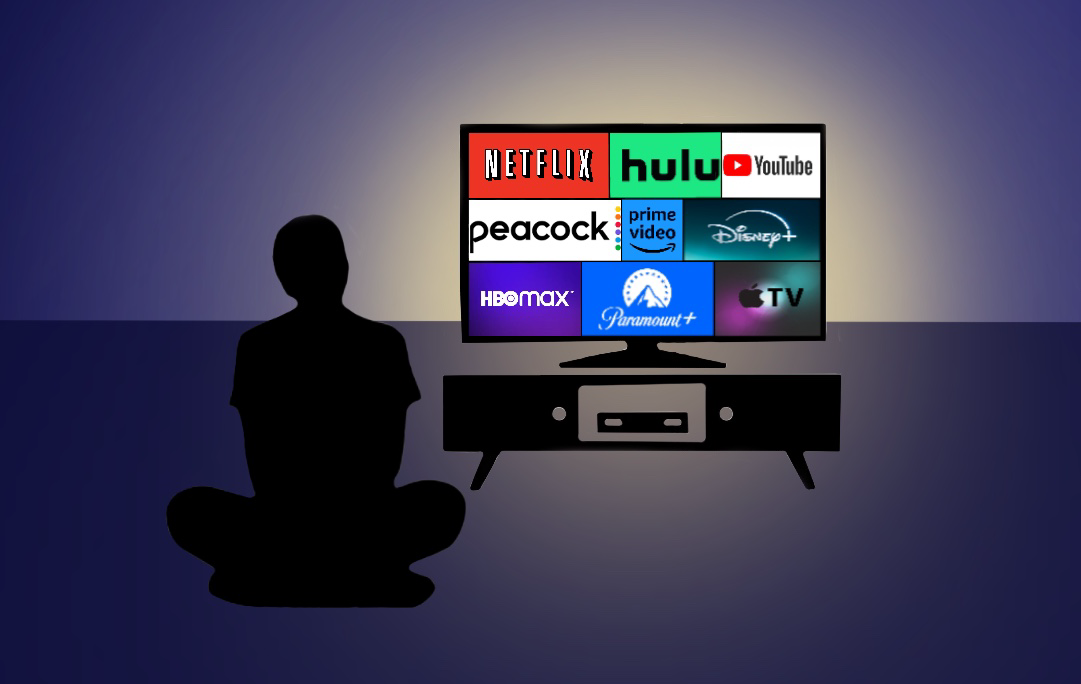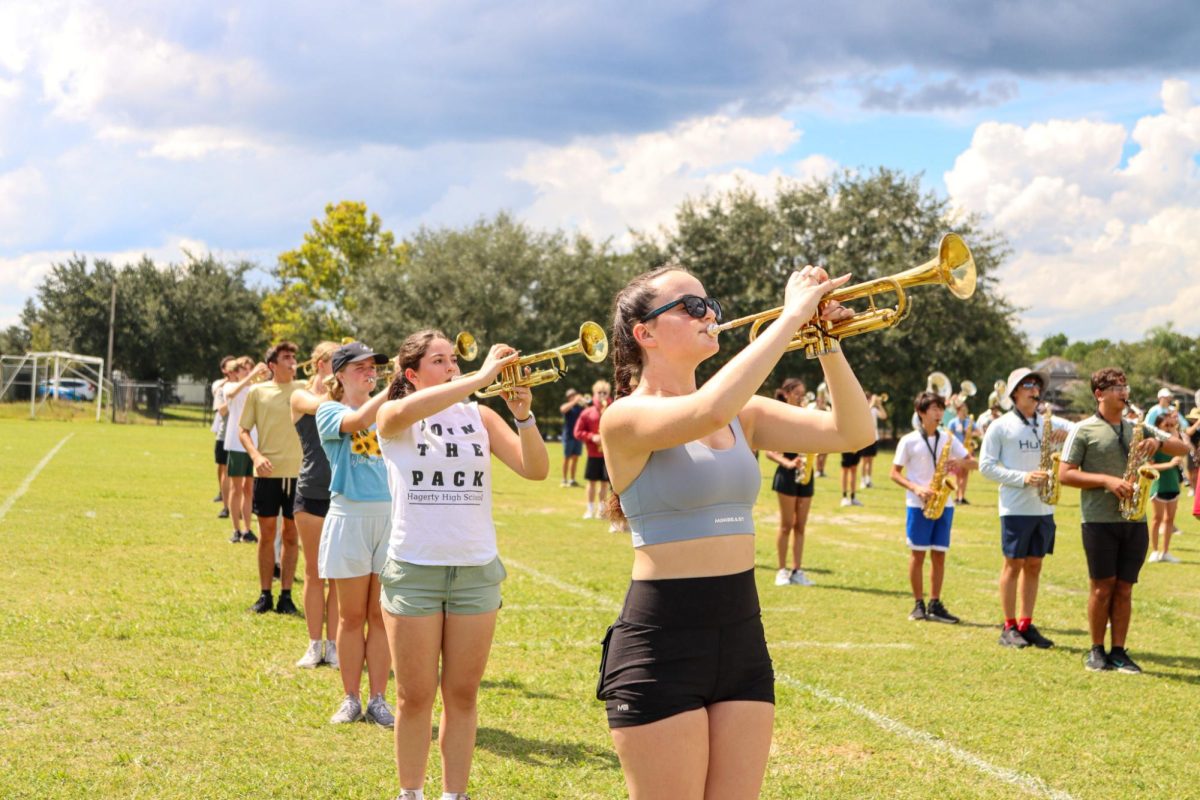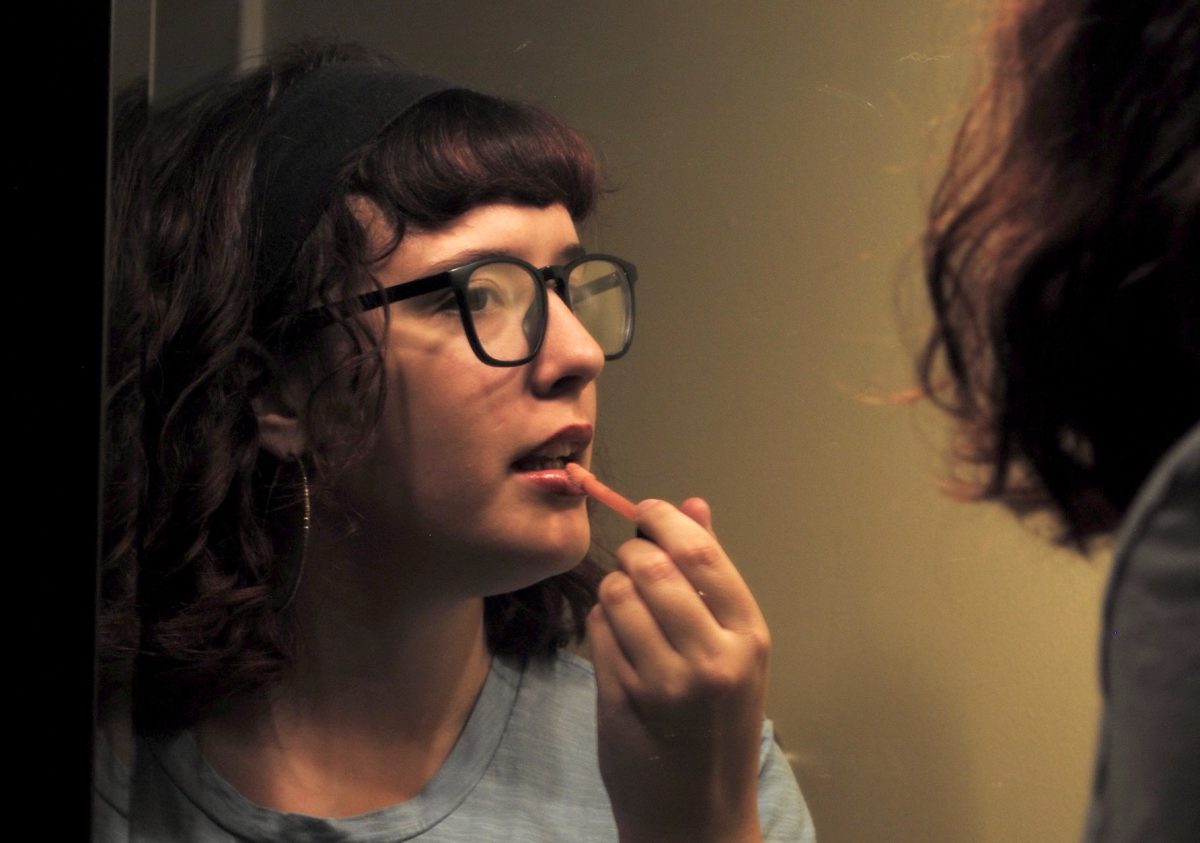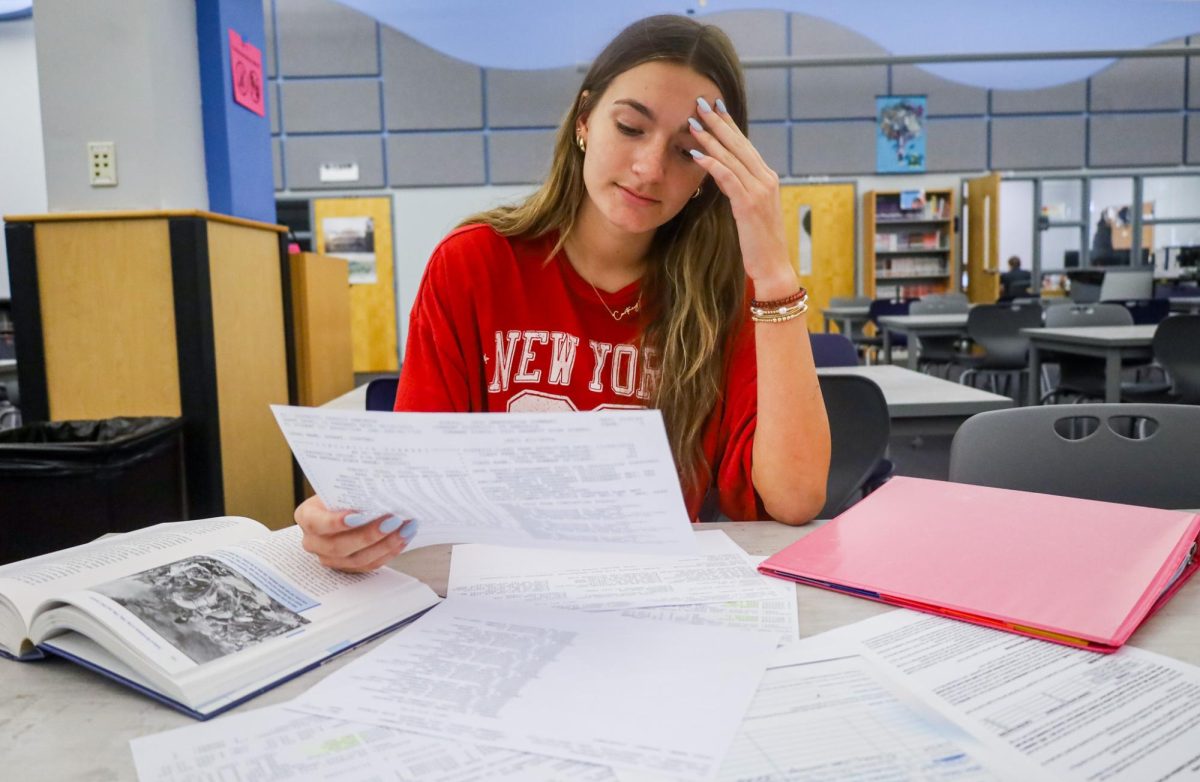You see a man standing on the median at an intersection, sign in hand that reads, “Hungry—Anything helps.” Often, people see this as a distant possibility, something that could never actually happen. In reality, the majority of Americans are much closer to homelessness than they like to admit. About 60% of consumers in America live paycheck to paycheck. One unexpected medical bill or vehicle repair can be enough to send someone over the edge.
Many have an image of a homeless person in their mind that consists of a disheveled-looking man who was simply too “lazy” to work, or the perception that their situation is entirely their fault. Each person seen on the corner has their own story. It is easy to block them out, avoid eye contact at a red light, and hope for it to turn green as soon as possible. While it may be a passing moment to you, this is the life of hundreds of thousands of Americans. To get a glimpse into what life is like as a homeless person in Florida, we thought it would be best to speak to someone who is currently homeless.
Life on the streets
We turned on to East Colonial Dr. and spotted a man standing on a median holding a sign that read, “Homeless & willing to work! Anything helps, god bless.” We parked the car, crossed traffic and approached him. The man was 29 years old and said his name was AJ. Through our conversation we learned what life is like on the streets of Orlando, how he gets food, how he survives, and how he deals with the constant dangers of living a nomadic life.
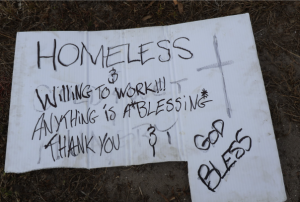
Food is surprisingly not as hard to come by as people would think.
“Over on Dean Road, there’s a resource center, you can get food every day, they have clothes, you can take showers, that’s how I take care of the basics,” AJ said.
People are also much more inclined to donate food than they are money, whether it be directly to the person in need or via nonperishables given to a shelter.
AJ does not usually stay in a shelter instead, he stays in camps set up by other homeless people in the area. These camps act as miniature communities for those who have nowhere else to go. They often have their own social structures, and some can even have a leader. This does not mean that they are safe havens; camps can be dangerous, and drug use is common, with the leader of the camps sometimes holding their position by simply supplying the others with drugs.
“I’ve been sober for two years, I try to just stay in my tent away from the [drug] use.[Drug use] is pretty common. Since I’ve been sober, I’ve kind of become a person that other people will come and talk to about sobriety and getting out [of homelessness].” AJ said.
Theft is also common, when everyone is struggling, it can become every man for themselves.
“One of the biggest things you lose when homeless is your privacy, even if you have a tent it’s not hard for people to get a knife, cut a slit and grab what they want,” AJ said. “I’ve found a lot of cool stuff out on the streets just for it to get taken. It’s almost like a sleepover every day, but it gets so tiring.”
Another issue regardless of where they stay is harassment and ridicule from the rest of society, including law enforcement.
The day prior to our interview, Orlando police were on the lookout for a homeless man that they believed that he could be hiding at AJ’s camp.
“He was from a different area, he’s not even someone who hangs out at our camp, but they must have heard it through the grapevine,” AJ said. “So the cop comes in and threatens us, he said, ‘If ya’ll don’t help us find him we are going to come back, and I bet we could lock all of y’all up.’ We got lucky that they caught the dude.”
It is not just police; discrimination against homeless people is normalized in all walks of society. Stores will often ask the homeless to leave, fearing that they will drive away customers.
“There are two 7-11s on Econ, and they profile homeless people pretty bad. I was told I wasn’t allowed in the store and when I asked why, they said, ‘You just aren’t,’ because they are not allowed to tell you it’s because you’re homeless, that’s socioeconomic discrimination.”
Mentality on the streets
The harsh lifestyle of living on the streets takes its toll, and 67% of unhoused people experience mental health issues. These issues can be genetic, but often stem from rough upbringings, trauma, abuse and generational poverty, which can play a key role in leading them to being unhoused. It is easy to blame someone for their struggles, however, data shows that people are much more likely to be poor if your parents were also low-income. Mistakes in the past can also have long-lasting effects on one’s life; a criminal record can stain your reputation even if charges are minor.
In AJ’s case, he described his childhood as “good” and free of abuse, though criminal charges he received during his senior year of high school began to derail his life. AJ noticed someone who was bullying a special needs student and took action. While he did not say directly what he did to confront the bully, violence was implied.
“I hate it when people pick on the weak. That situation isn’t the only reason I’m homeless but it was definitely the start of me getting off track,” AJ said.
AJ became homeless on and off at the age of 22 and began living fully on the streets about three years ago.
One thing people do not realize is that to become fully homeless it means you have no one left who wants to extend a helping hand. Most people find homelessness so distant because they will always have parents, cousins, aunts, uncles, and friends who they can stay with. People like AJ who live on the streets lack that. AJ’s mother lives in Orlando as does his sister, both know of his situation.
“I see my mom every once and a while, she’s never asked if I want to come and stay with her. There’s definitely a lot of guilt that comes with it also.”
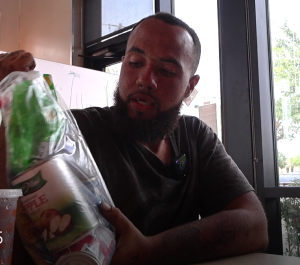
Childhood & family homelessness
Every person on the streets was once a child; Some still are, each year around 4.2 million youth and young adults experience homelessness, 700,000 of which are unaccompanied minors meaning they are not with family or a guardian. It is also important to note that being homeless doesn’t necessarily mean that someone is living on the street; some homeless kids and families stay in hotels, or with relatives.
Students who struggle to find a roof over their head will often work with a social worker to help their life stay on track. Hagerty’s on campus social worker Kaley Thompson might not see the same kind of homelessness that someone like AJ may be experiencing, she definitely works close with students who may be getting close.
“When we identify a family as homeless we immediately get in contact with them to make sure they have everything they need and try to support them. See what we can do to help with the transition from being housed to being homeless to ultimately being housed again in the same area,” Thompson said.
Hagerty currently has 26 students identified as homeless. Some live with relatives, some have been kicked out and forced to live with friends. The schools support network helps these kids to get transportation, clothes, and basic necaties.
Even students who are not homeless have tethered on the edge and experienced the risk of losing everything. As stated prior, one surprise bill or parental lay-off can change someone’s world.
“My dad was left unable to work after an injury on the job, it was hard only having his income taken away,” Ella*, a Hagerty student said. “People don’t realize how easy it is for everything to change. We lost our insurance so if I got sick or hurt I don’t know what we would have done.”
Ella’s father was able to recover and go back to work but situations like these are stressful and can affect other parts of students’ lives.
“I was definitely worried, there was a lot of uncertainty, like I didn’t know how we were going to pay for stuff. It’s a reality check,” Ella* said.
Solutions and assistance
Getting out of homelessness is not just about money, it is about reintegrating back into normal society. Homeless people, especially those who have been on the streets for years, can have a hard time adjusting to normal life.
“I felt like I didn’t fit into society— the longer I stay out here, the harder it’s going to be to adjust, but I know I can do it,” AJ said. “We need some kind of transitional or vocational program, I try to at least be an example to everyone out here on the streets to show them that they can get a little better.”
HOPE Helps is a non-profit organization in Central Florida. They focus on reducing hunger and homelessness as well as helping families in need. Those in need can reach out to their resource center, from there they will be directed to whatever services they need. Additionally, they will usually have events for struggling families during major spending seasons like back to school or the winter holidays, where families can get free things like school supplies or toys, and a “choice” food pantry where people can select their own groceries.
“HOPE serves the working poor and those who have never been in crisis due to job loss, medical issues and struggle to make ends meet. Every story is different, and our case managers work closely on personalized case plans to help each individual or family return to self-sufficiency,” marketing manager Romain Casanova said.
HOPE Helps also offers financial literacy classes to help those in need to not wind up in the same situation once they are back on their feet. They build strong relationships with each client in order to make them feel safe and at home as they work toward the common goal of a better life.
“HOPE treats every client like family, we learn and understand their situations, and our case managers are dedicated to working hand in hand with them to help get them back on their feet. Our ultimate goal is to reach our neighbors in need before they become homeless,” Casanova said.
Going from life on the streets to a normal life can be very difficult. It requires them to overcome financial obstacles, their own mental health issues, drug abuse, rebuild a new positive social circle and then maintain those improvements going forward.
Rent prices have begun to stabilize again after a huge spike during the COVID-19 pandemic, this news may give a glimmer of hope to those seeking to escape homelessness. With the help of nonprofits, government programs and affordable housing, it is possible to get people off of the streets and into homes.
“I’m not asking for a handout, I just want a chance to live life, maybe some vocational training,” AJ said. “I want to change the stigma around homeless people. There’s no difference between you and the homeless guy on the road, we have the same curiosities, the same sense of happiness, sadness, we all feel the same.”
